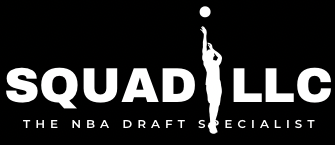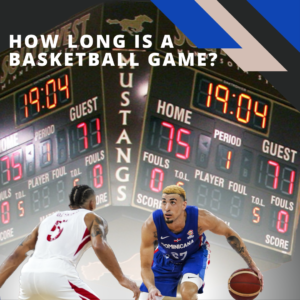What Is Traveling In Basketball Terms?

Many of those unfamiliar with the rules of basketball may have to ask, “What is traveling in basketball?” While traveling is one of the most common rule violations in basketball, it is also one of the least understood.
Unlike other rules infractions like personal fouls, double dribbles, and palming violations, which are mostly standard across all levels of play, traveling violations can vary greatly in interpretation.
Traveling in Basketball
In a broad sense, a travel in basketball can be defined as a player moving illegally with the ball when they pick up their dribble. The NBA and other professional leagues have a pretty standardized definition of what constitutes traveling.
But lower levels such as youth leagues, high school, and even college interpret basketball traveling rules differently. Players in non-professional leagues should become as familiar as possible with the specific rule standards that officials will apply in their respective leagues when calling a travel.
What is a Travel in Basketball?
The most common form of traveling occurs when a player takes more than 2 steps with the ball without dribbling. It is also important to note that in some circumstances, a player cannot take 2 steps to move with the ball. For example, if a player was standing still when they received the ball or is standing motionless with the ball, they cannot take two steps with the ball or will be called for a traveling violation.
Is Dragging your Foot a Travel?
Another common traveling violation happens when a player fails to pivot correctly. When a player picks up their dribble and is standing still in a motionless position, their only option for legal movement, other than jumping in the air with the ball, is to pivot.
Pivoting involves a player planting one of their feet on the ground and rotating their body around that foot. The player’s foot essentially functions as an axis around which the player rotates. If the player drags their foot across the surface of the court or moves it in any other way other than a rotating motion, it is a traveling violation.
Shot Attempts and Traveling
Certain forms of traveling can also happen during shot attempts. For example, if a player starts to shoot a jump shot, but fails to release the ball before their feet hit the ground, they will be called for a traveling violation. Also, if a player shoots an airball, and is the first person to touch the ball before it hits the ground, they will be whistled for traveling.
Other Miscellaneous Forms of Traveling
Another form of traveling occurs when a player attempts to pass the ball to themselves. Players are only allowed to pass the ball to one of their teammates. Unless, said player is throwing the ball off the backboard to themselves.
Also, a player holding the ball on the ground will be called for traveling if they attempt to stand up without dribbling the ball. Finally, a player in possession of the ball who falls down with the ball will be whistled for traveling.
Related Articles:
What is not a Travel in Basketball?
There are several different legal moves that a player can make without dribbling the ball that are not forms of traveling. However, the legality of certain moves often depends on the level of play governing the specific basketball game.
As a general rule, the NBA is far more lenient in the type of moves they will allow players to make than all other levels of play. Sometimes, fans probably wonder if referees are asking themselves, “What is traveling in basketball?”, with the lack of traveling calls throughout the league.
Can you Take 2 Steps without Dribbling?
The NBA travel rule allows players to take 2 steps without dribbling after the player gathers the ball in their hands. A player gathers the basketball when they either put both of their hands on the ball or they place the hand they are dribbling with underneath the basketball. At this point, they are allowed 2 full steps before having to shoot or pass the ball.
High School Basketball Travel Rule – 1 and a Half Steps
In high school, players are generally given 1 and a half steps, instead of 2, like in the NBA. Many basketball analysts and coaches explain the 1 and a half step provision by noting that high school players must take a shot or pass the ball directly off the 2nd step, simultaneously. This differs in the NBA where players are given leeway to take 2 full steps without being called for traveling up until the point where they take their 3rd step.
Why the Euro Step is not a Travel
One of the biggest topics of discussion surrounding traveling in the NBA is the Euro Step. A recent addition to the league originally introduced by Sarunas Marciulionis in the 1990s, and perfected by Manu Ginobili.
Neither Marciulionis nor Ginobili seemed to ever ask themselves, “What is traveling in basketball?”, pushing the limits on the legality of extra steps. When evaluating the Euro Step and other moves in the NBA, it is vital to fully understand how the NBA interprets different steps and gathering motions.
What is a Gather Step in Basketball?
As explained earlier, gathering the basketball involves a player putting both hands on the ball or the dribbling hand underneath the ball, at which point he must start the process of passing or shooting the ball. However, as the player is in the process of gathering the ball, they typically take a stabilizing step.
This step, known as a gather step or zero step, does not count as a step in the NBA, and players are allowed to take 2 additional steps after the gather step before shooting or passing the ball. Therefore, the Euro Step, which involves a player taking two steps in opposite directions to throw off their defender after picking up their dribble, is not a travel.
Traveling vs. Other Common Basketball Moves
Is 3 Steps a Travel in Basketball?
Taking 3 steps is always traveling at all levels of basketball, including the NBA. To be fair, however, it is probably most accurate to state that NBA players can take 2 and a half steps after picking up the ball, counting the gather step as half a step.
Is a Jump Stop a Travel in Basketball?
A jump stop is a legal move where a player jumps into the air after gathering the ball and lands simultaneously on both feet in a controlled stance. Once the player lands, however, they cannot move their pivot foot and must pass or shoot the ball.
Is a Hop Step a Travel in Basketball?
A hop step, also known as the pro hop is a legal move that is best described as a combination of a jump stop and euro step. The player jumps off 1 or 2 feet and then lands on both feet, throwing the defender off balance, and then normally attempts a shot. Just as with the jump stop, once the player lands on both feet, they cannot move their pivot foot and must pass or shoot the ball.
Is a Step-Back a Travel in Basketball?
The step-back is another legal move that allows players to generate more space for themselves to shoot a jump shot. Although modern step-backs, especially those popularized by James Harden, look like travels, they are not.
The same gathering rules apply, so as a player gathers the ball when preparing to take a jump shot, they are allowed to take two steps back as a part of their move, just like they are allowed to take two steps forward on layup attempts.
Does the NBA call Traveling?
Although some individuals complain that the NBA doesn’t call traveling, it is important to note that many of the moves that may be traveling violations at the high school or collegiate levels are legally sanctioned according to the NBA rulebook. The NBA has made it clear that two-step moves after the gather step, like the Euro Step and the hop step, are legal and will remain so for the foreseeable future.
Hand Signal for Traveling in Basketball
Although traveling is one of the least understood rules in the game of basketball, the hand signal that referees use to indicate traveling is one of the most recognized in basketball. When a player commits a traveling violation, the referee will blow the whistle, form fists with both his hands and then rotate them around each other with both arms positioned horizontally in front of their body. The call results in a turnover, and the opposing team is awarded the ball.
One of the most misunderstood rules violations in basketball
Traveling is one of the most misunderstood rules violations in basketball. It’s often called very differently depending on the level of play or league governing the basketball game. The confusion has led many fans who observe the lack of consistency to ask, “What is traveling in basketball?”
However, it is important to note that the NBA is very clear on what they consider a traveling violation, allowing players to take 2 full steps after gathering the basketball. Many other forms of traveling apart from the gather step provision, are relatively standard for most levels of play, although there are some exceptions.









